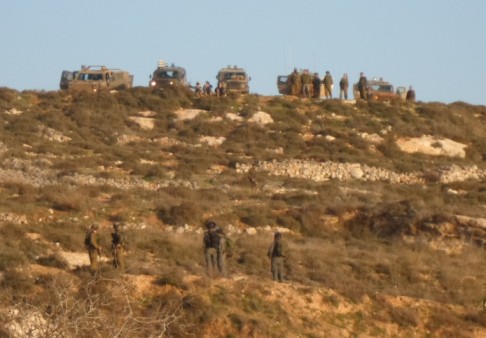Tag: Yitzhar Settlement
-
Settlers attack Urif and Qusra with guns, knives and stones
January 10th, 2013 | International Solidarity Movement, Urif and Qusra, Occupied Palestine As the villages around Nablus woke up to the rare scene of a snow-covered landscape, Israeli settlers violently attacked groups of youngsters playing with snow in the villages of Urif and Qusra. Two people were both hit in the leg by live bullets…
-
Attacks on Urif continue, soldiers invade the village
27 December 2012 | International Solidarity Movement, Urif, Occupied Palestine Following three days of incessant attacks from Israeli soldiers and settlers on the village of Urif, south of Nablus, around seventy soldiers on ten military jeeps soldiers invaded the village at 9:30 this morning. They started firing tear gas on children aged three to six…
-
Urif under attack
26 December 2012 | International Solidarity Movement, Urif, Occupied Palestine Over the past three days, the village of Urif, south of Nablus, has been under constant attack from Israeli settlers and soldiers. Soldiers invaded the village twice and numerous people sustained injuries from rubber-coated steel bullets and tear gas canisters. People in Urif said that…

